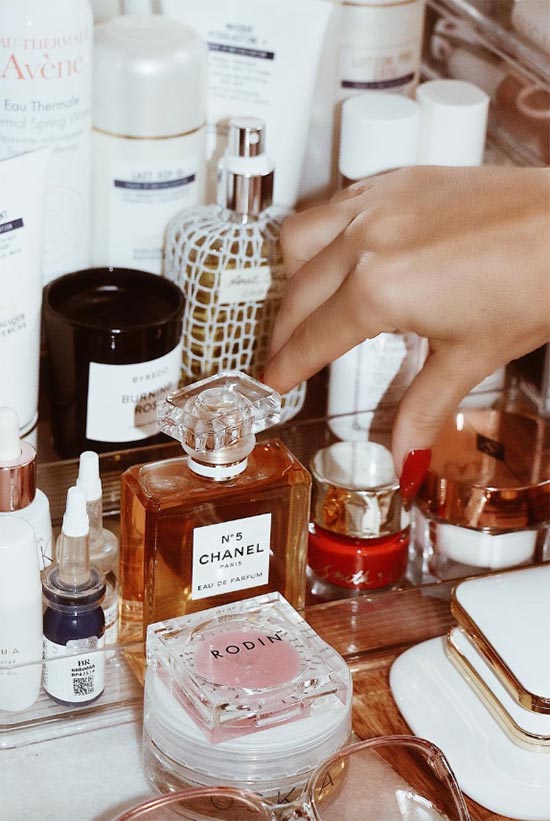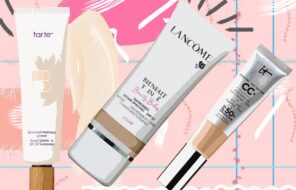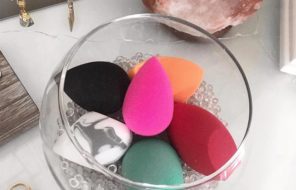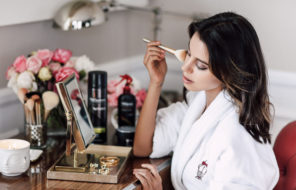- Perfume or parfum extrait, eau de parfum, eau de toilette, and eau de cologne are all different labels of a fragrance, based on the concentration of the aromatic compounds contained.
- Perfume/ parfum extrait is the strongest scent concentration, composed of 15-40% essential oils.
- The four main scent categories of women’s perfumes are floral, oriental, woody, and fresh. And the three main notes of a fragrance are top, middle, and base notes.
- Store your perfumes in a cool, dry place, and if you want them to last longer, better keep them in the fridge.
One of the most common questions people ask about fragrances includes what they are and how to tell them apart. It’s important to note that perfumes can usually be divided into categories and varying concentrations. To find your favorite perfume or fragrance, you need to know all the details about the main types of perfume. We’ve created a guide to help you determine the best signature perfume for you.
In this article:
- Fragrance Concentrations
- Scent Categories
- Fragrance Notes
- Finding Your Perfect Perfume
- Other Fragrance Tips for Women
Fragrance Concentrations
Deriving from the Latin word “perfumare,” which stands for “to smoke through,” perfume is a fragrant liquid comprised of aromatic essential oils, solvents, and fixatives. Depending on the concentration of the aromatic compounds, perfumes can have a different scent intensity and accordingly different names.
Often, you’ll hear the words perfume (also known as parfum extrait), eau de parfum, eau de toilette, and eau de cologne. Outside of the beauty industry, people use them interchangeably, but they don’t mean the same thing. Each label refers to the fragrance’s scent concentration and how long you can expect it to last throughout the day. Note that the stronger or longer a fragrance is said to last, the more expensive it will be.
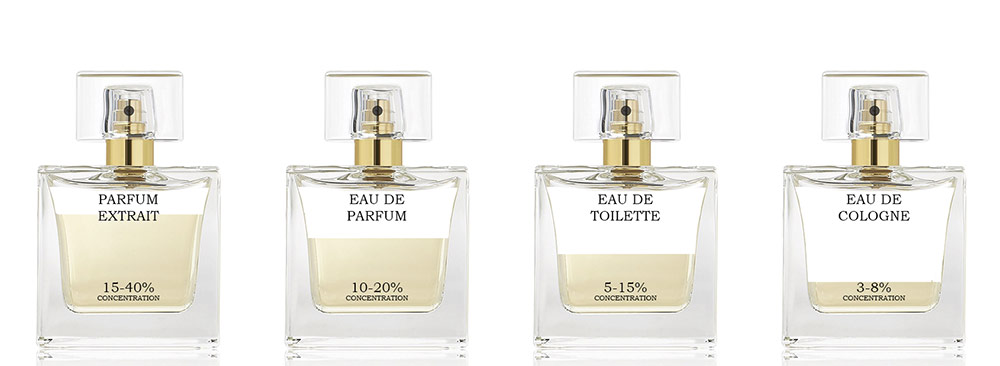
Perfume Extract/ Parfum Extrait
Parfum is the strongest concentration you can find, composed of around 15-40% of essences. One application can last all day long. True perfumes are also the most expensive on the market.
Eau de Parfum
Eau de parfum is the second strongest type of fragrance concentration, featuring 10-20% concentration of oils. One application will last for roughly six hours.
Eau de Toilette
Eau de toilette is the third strongest fragrance concentration with 5-15% aromatic essence and a more affordable option for most consumers. This type of fragrance will need to be reapplied throughout the day if you want your scent to last longer.
Eau de Cologne
The lowest concentration is eau de cologne with just 3-8% concentration of essences used. In addition to being the cheapest option, it’s also the fragrance category that lasts the least. One application will typically only last for two hours before needing to be reapplied.
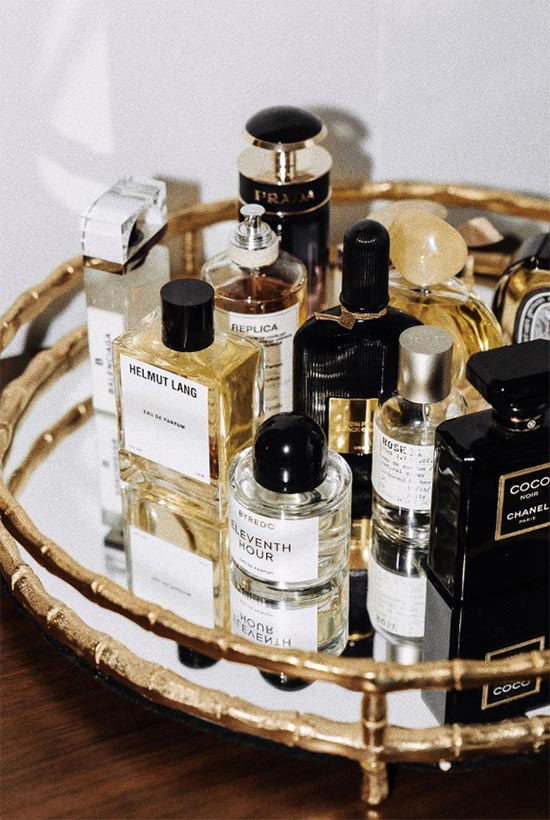
Scent Categories
So now you know how to determine a fragrance’s strength, it’s time to understand the different types of fragrance scents that exist. Normally, fragrances can be divided into specific scent categories. The most common scent categories among women’s perfumes are floral, oriental, woody, and fresh.
These scent categories are also divided into subcategories. Thus, the floral scent family can include floral, soft floral, or floral oriental notes, the oriental category includes soft oriental, oriental, and woody oriental options, the woody family comprises of woods, mossy woods, and dry woods, while the fresh scent category is totally aromatic, including citrusy, fruity, green, and watery notes.
Some of the most feminine and freshest women’s perfumes would typically be based on floral or fruity notes. As the names imply, a floral perfume will include flowers as the primary notes, and fruity perfumes will include fruit notes.
Spicy perfumes are typically the most exotic, including notes such as cinnamon or star anise. Even though musk is usually reserved for men’s cologne, many of the best perfumes for women do include musk notes such as leather or pine. But what is a fragrance note?
Fragrance Notes
The simple answer is that a note is as important to a fragrance as an ingredient is for a recipe. Depending on the concentrations, and what other notes are included, you can create a unique fragrance.
Fragrance notes can be further divided into three specific divisions – top, middle, and base. And it’s important to understand that smelling fragrance is much like smelling a glass of wine – different notes can be detected at different stages as you wear a scent.
- Top Notes: These are the first scents you smell when you open a bottle of perfume or spritz it on your wrists. But these usually tend to fade the fastest. Common fragrance top notes are citrusy, woodsy, floral, oriental, and herbal.
- Middle Notes: Also known as heart notes, middle notes are the core notes that you’re most likely to notice as you wear a fragrance throughout the day. But in reality, these are the notes that help to transition the fragrance from the top notes that evaporate quickly to the base notes that linger. Some of the common heart notes of a perfume are jasmine, rose, ylang ylang, lavender, lemongrass, and nutmeg.
- Base Notes: Base notes are the final notes that help to round out the fragrance and are the ones most likely to last as you wear a scent throughout the day. They usually combine with the middle notes to create a lingering scent. This reaction between the middle and base notes can also explain why you might feel a scent changed from when you first applied it to how it smells throughout the day. Vanilla, musk, sandalwood, amber, patchouli, and cedarwood are some of the most popular base notes of a fragrance.
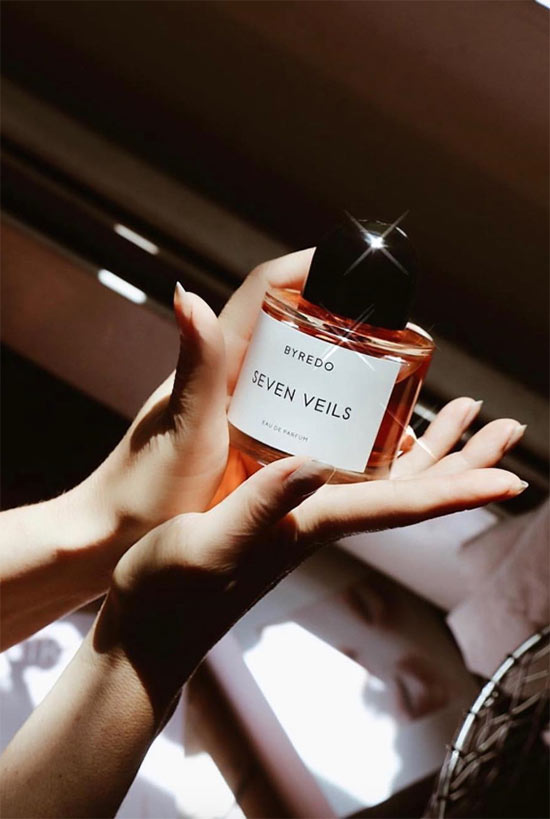
Finding Your Perfect Perfume
So now you know what goes into a bottle of perfume, and how to differentiate the various notes. So, how do you go about finding the best perfume that doesn’t just smell nice but fits your personality?
Start by Considering Your Personality
Are you a traditionalist or are you free-spirited and ready to run through the wildflower fields? Or, maybe you prefer to be understated and don’t want an entire room looking at you when you enter it. As you’ll see in our breakdown below, some of the best perfumes for women put a lot of thought into their note profiles so that it’s clear just from the descriptions who would most benefit from wearing that particular fragrance.
Soft florals or fruity scents are ideal for women who prefer to keep a low profile. Meanwhile, someone who’s a traditionalist might opt for a truly classic scent like Chanel No. 5. And if you’re the type who abhors “girly” scents, opting for earthier or musky notes like leather, coffee, or wood can create a great unisex option.
Follow Your Nose
If you’re at a store like Sephora or Ulta, where you can easily sample perfumes, that’s one of the best ways to find which scents speak the most to you. But for the best results, be sure to follow these important tips.
- If you’re browsing through multiple scents, using a paper tester strip is fine. But avoid touching it to your nose, as it will make it impossible to detect other notes in future fragrances you sample.
- Instead of inhaling directly with the strip in front of your nose, let the scent waft up from a distance. This will prevent the scent from overwhelming your senses.

Sampling Scents
After you’ve browsed a few scents, ask for a sample. This will give you a chance to test how the fragrance wears throughout the day. For the best testing experience, apply the fragrance to your wrist in the morning and don’t apply it more than once more in the afternoon.
Opting for this method will ensure that you’re able to determine whether the middle and base notes appeal to you as the day progresses. For the best results, do this experiment twice with every fragrance you’re considering. If after two days you like a fragrance, you’ve found the best women’s perfume for you.
Take Seasons into Account
While you can absolutely wear your favorite perfume year-round, it’s a great idea to switch your fragrances from season to season to always smell fresh. Generally, the temperature has a great impact on the way a perfume is perceived, with the hot weather of summer intensifying fragrance notes, and the cold weather making it more difficult for the perfume to evaporate.
With that said, take these tips into account while looking for the best seasonal perfume for you:
- Spring Perfumes: In spring, you should focus on lighter, fresher scents with green citrusy notes, including basil, mint, orange blossom-based fragrances. Consider trying Lancôme La Vie est Belle or Gabrielle Chanel for spring.
- Summer Perfumes: Your summer perfume should be airy, cool, and light, evoking the sea and floral-infused summer nights out. You can also consider getting a body mist in summer. Floral scents with notes like rose, jasmine, lavender, bergamot, and mimosa are some of the best summer perfumes for women. Byredo Gypsy Water, and Philosophy Amazing Grace are two amazing summer perfumes for women.
- Fall Perfumes: Fall fragrances should be moody, romantic, and woodsy, just like the season is. Look for warm and musky fragrance notes, such as amber, sandalwood, patchouli, or oakmoss. Hermès Eau des Merveilles Elixir des Merveilles, and Narciso Rodriguez For Her are some of the best fall perfumes for women to try.
- Winter Perfumes: In winter, you can go for heavier scents, like strong and exotic oriental perfumes. Consider cinnamon, vanilla, amber, or spices as the fragrance notes you’ll choose for winter. You can pick up Serge Lutens Féminité du Bois, or Maison Margiela ’REPLICA’ By The Fireplace as your next winter perfume.
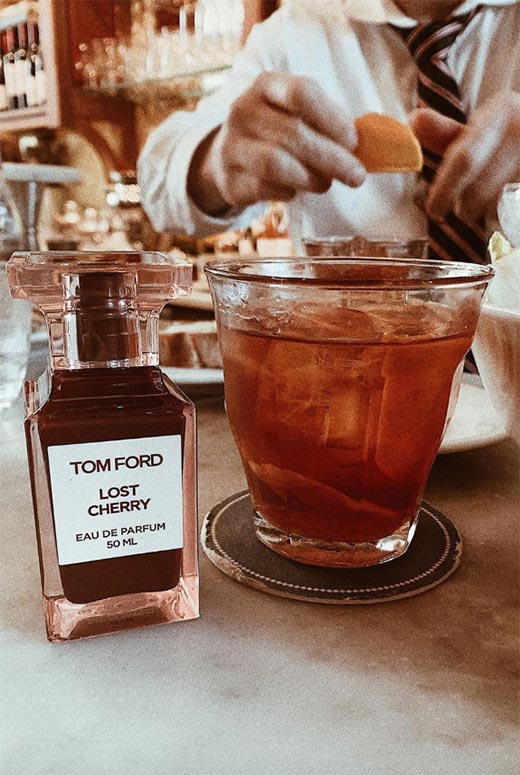
Other Fragrance Tips for Women
Once you have finally picked up your signature scent, it’s time to know how to wear it to smell your best!
Applying Perfume
The right way of applying perfume is at pulse points, such as the inside of wrists, the nape of the neck, behind the ears, or on the elbows and knees, as the pulse warms the scent and releases fragrance continuously.
There’s often a debate about which method is best when you’re applying your perfume. Should you spritz or dab? The answer is, either is fine, as long as you’re not bathing yourself in fragrance. This can be overwhelming, especially in enclosed spaces like airplanes, trains, or conference rooms.
And when it comes to reapplying, this is going to depend on which type of fragrance you own. A true perfume can leave you with a scent that lasts all day. In contrast, the other categories (eau de parfum, eau de toilette, and eau de cologne) will fade faster with eau de cologne needing to be reapplied as frequently as every two hours.
Should I Layer Fragrances?
Another common question is whether you can layer perfumes. While there are a few from our list of the best perfumes for women that specifically promote themselves as ideal for layering, this typically is not recommended. This is because the notes within each perfume might interact in ways that create a less than ideal final scent.
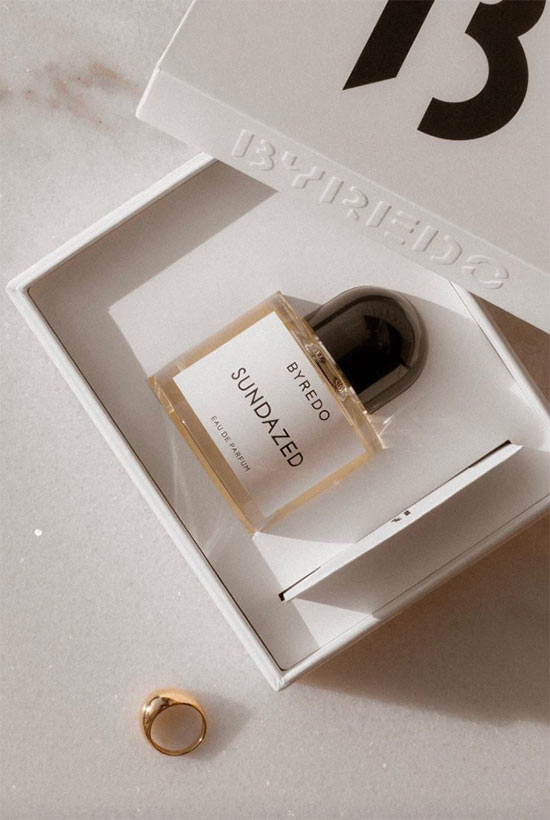
Properly Storing Your Fragrance
Just like makeup, fragrance has a shelf life. While we can’t always pinpoint the exact time frame that each of the fragrance categories will “turn” or go bad, most experts say that you’ll know by the smell.
To prevent this from happening, store your perfumes in a cool, dry place where they’re less likely to be touched by direct sunlight or heat sources. But if you want them to last the longest, keep your fragrance in your fridge with the veggies.
Photos via @ohuprettythings, Instagram

